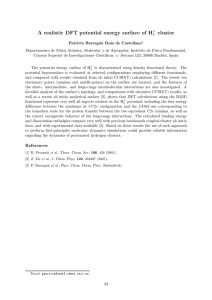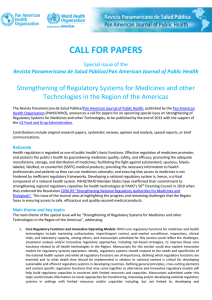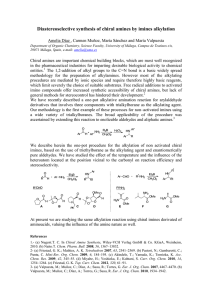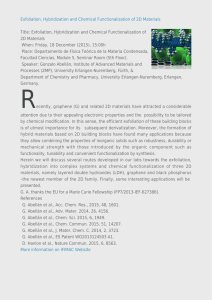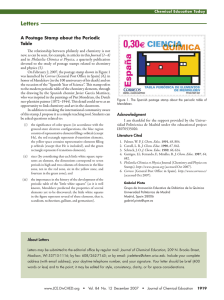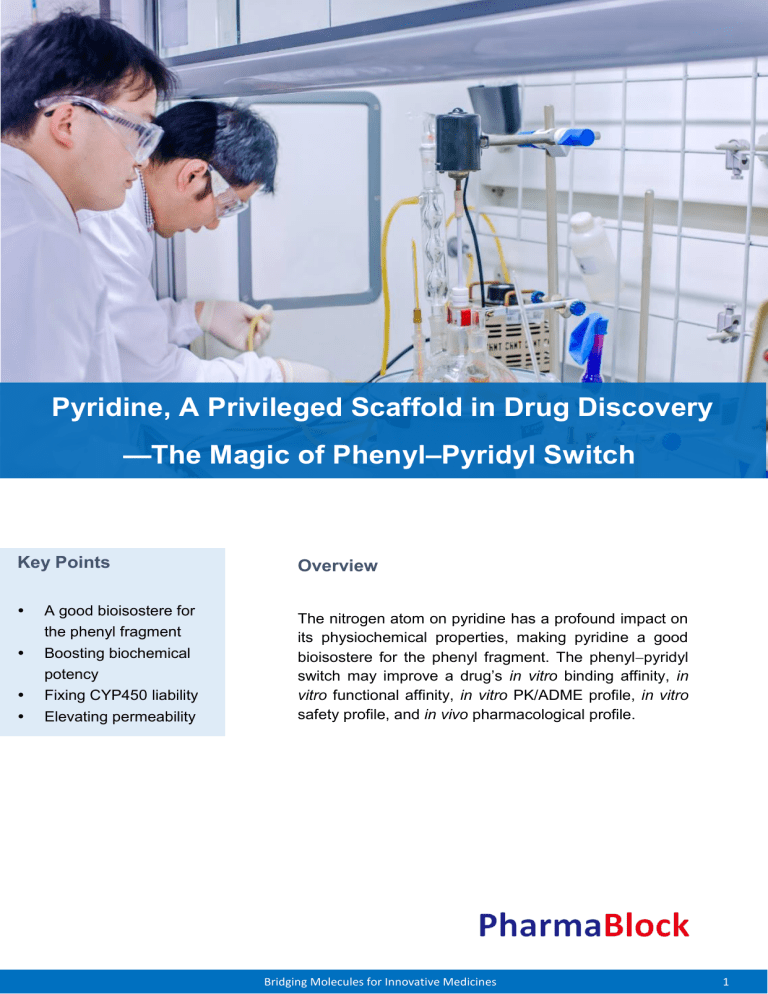
Pyridine, A Privileged Scaffold in Drug Discovery —The Magic of Phenyl–Pyridyl Switch Key Points A good bioisostere for the phenyl fragment Boosting biochemical potency Fixing CYP450 liability Elevating permeability Overview The nitrogen atom on pyridine has a profound impact on its physiochemical properties, making pyridine a good bioisostere for the phenyl fragment. The phenylpyridyl switch may improve a drug’s in vitro binding affinity, in vitro functional affinity, in vitro PK/ADME profile, in vitro safety profile, and in vivo pharmacological profile. Bridging Molecules for Innovative Medicines 1 PharmaBlock designs and synthesizes over 5226 Pyridines, and 1059 Pyridine products are in stock. A list of featured Pyridine derivatives is With 6 -electrons, pyridine is an electron-deficient aromatic heterocycle containing a ring nitrogen atom. The aromatic-electron system does not require participation of the lone pair of electrons on the nitrogen atom. The ring nitrogen is more electronegative than the ring carbons, making the two-ring carbons and the-ring carbon more electropositive than otherwise would be expected from benzene. attached at the end of this whitepaper. CLICK HERE to find detailed product information on webpage. In the context of medicinal chemistry, replacement of a CH group with an N atom on a phenyl ring may influence a drug’s molecular and physicochemical properties, as well as its intra- and intermolecular interactions that can translate to improved pharmaceutical profiles. Pyridine-containing Drugs The FDA has approved over 60 pyridine-containing drugs, making pyridine a privileged scaffold, only eclipsed by (72) piperidine-containing drugs. We showcase only 8 representative examples here for brevity. Schering–Plough’s antihistamine franchise dominated the allergy drug market for decades. Its non-sedating histamine receptor-1 (H1) antagonist loratadine (Claritin, 1), containing one pyridine ring, was one of the most popular treatment for allergy without central nervous system (CNS) side effects. Its carbamate moiety is key to retard it brain penetration and the 8-chlorine atom blocks a probable site of metabolism and offers a longer duration of action1—since pyridine is electron-deficient, the phenyl ring is oxidized more readily by cytochrome P450 (CYP) in liver. Nevirapine Bridging Molecules for Innovative Medicines 2 PharmaBlock Products PBYS1644 PBYS1534 (Viramune, 2), Boehringer Ingelheim’s non-nucleoside human immunodeficiency virus type 1 (HIV-1) reverse transcriptase inhibitor (NNRTI) for treating AIDS, contains two pyridine rings. It adopts a “butterfly-like” conformation when binding to the allosteric site of the reverse transcriptase enzyme. Although the corresponding N11-ethyl derivative was more potent (IC50, 35 nM) than nevirapine (2, IC50, 84 nM) in both enzymatic and cellular assays and more soluble, the N11cyclopropyl analog nevirapine (2) was selected as the drug candidate because it was more bioavailable due to the fact that cyclopropane was more resistant to metabolism while the ethyl group was more prone to undergo dealkylation.2 The pyridine motif is indispensable to the biological activities of AstraZeneca’s proton pump (H+,K+-ATPase) inhibitor omeprazole (Prilosec, 3) as a treatment of peptic ulcer. The lone pair electrons on pyridine is the “engine” to start the “omeprazole cycle”. Indeed, the “omeprazole cycle” begins by nucleophilic attack of protonated benzimidazole by the N atom of pyridine to form a benzimidazoline intermediate.3 In a sense, omeprazole (2) is a pro-drug, only becoming active when protonated. On the other hand, Roche’s netupitant (4, Akynzeo when combined with palonosetron, a 5HT 3 receptor antagonist) is a nerokinin-1 (NK-1) receptor antagonist for the treatment of nausea and vomiting caused by chemotherapy or surgery.4 PB98028 Kinase inhibitors are the most fruitful class of medicines as targeted cancer drugs during the last three decades. Half a dozen of them possess the pyridine fragment, which include Lilly’s cyclin-dependent kinase (CDK)4/6 inhibitor abemaciclib (Verzenio, 5)5 and Pfizer’s anaplastic lymphoma kinase (ALK) inhibitor lorlatinib (Lorbrena, 6). The case of lorlatinib (6) serves as a clever medicinal chemistry maneuver that converting linear ALK inhibitor crizotinib (Xalkori) to macrocycle may offer superior physicochemical properties. As the first-in-class ALK inhibitor, crizotinib (Xalkori) has little CNS exposure. Guided by structure-based Bridging Molecules for Innovative Medicines 3 PharmaBlock Products drug design (SBDD), lipophilicity efficiency (LipE), and physical propertybased optimization, Pfizer discovered macrocyclic lorlatinib (6), which has good absorption, distribution, metabolism, and excretion (ADME), low propensity for P-glycoprotein (pgp) 1-mediated efflux, and good passive permeability with significant CNS exposure. It is thus suitable for treating metastasized brain tumors.6 PBV0114 PB05380 PBY1404033 The latest entries of pyridine-containing drugs on the market may be exemplified by Janssen’s androgen receptor (AR) antagonist apalutamide (Erleada, 7)7 for treating castration-resistant prostate cancer (CRPC) and Agios’ isocitrate dehydrogenase 1 (IDH1) inhibitor ivosidenib (Tibsovo, 8) for treating IDH1-mutant cancers such as acute myeloid leukemia (AML).8 The structure of apalutamide (7), discovered by Jung’s group at UCLA in the 2000s, is similar to that of enzalutamide (Xtandi, developed by Medivation and approved in 2012), also discovered by Jung. However, in murine xenograft models of metastasized-CRPC (mCRPC), apalutamide (7) demonstrated greater antitumor activity than enzalutamide. Furthermore, apalutamide (7) penetrates less effectively the BBB (blood-brain barrier) than enzalutamide, suggesting that the chance of developing seizures may be less than with enzalutamide. At the end, the fact that both Janssen and Medivation were able to secure intellectual properties for their respective AR antagonists also speaks volume of the power of phenylpyridyl switch. Finally, Agios’ ivosidenib (8) is the first-in-class IDH1 inhibitor, approved hot on the heel of FDA approval of their IDH2 inhibitor enasidenib (Idhifa, incidentally, also contains two pyridine rings), another first-in-class cancer drug. Bridging Molecules for Innovative Medicines 4 PharmaBlock Products PB03458 Pyridines in Drug Discovery PBY2010229 In 2017, Pennington and Moustakas published an excellent review on “The Necessary Nitrogen Atom” covering the influence of pyridine as a bioisostere for the phenyl fragment (dubbed as the N scan SAR strategy).9 The phenylpyridyl switch may have profound impact on a drug’s in vitro binding affinity; in vitro functional affinity; in vitro PK/ADME profile; in vitro safety profile; and in vivo pharmacological profile. Here only a few interesting examples are highlighted. a. Boosting Biochemical Potency Replacing a phenyl ring with a pyridine offers a nitrogen atom as a hydrogen bond acceptor, which may make contact with the target, forming a hydrogen bond in addition to a subtle change in -stacking. The consequence may be higher binding affinity and better biochemical potency. PB02219 Phenyl-linked sulfonamide 9 as a dual mammalian target of rapamycin (mTOR) and phosphoinositide 3-kinase-(PI3K) inhibitor was not very potent (mTOR, IC50 = 1,500 nM; PI3K, IC50 = 48 nM). A partial N-scan on the phenyl scaffold of 9 identified pyridyl-linked sulfonamide 10 displaying 140- and 30-fold improved potency toward mTOR and PI3K, respectively (mTOR, IC50 = 11 nM; PI3K, IC50 = 1.6 nM). An X-ray cocrystal structure revealed that the pyridyl N atom engaging in a hydrogen bond with an ordered water molecule located between Tyr867 and Asp841 in the affinity pocket of the enzyme.10 Bridging Molecules for Innovative Medicines 5 PharmaBlock Products PBES0087 b. Fixing CYP450 Liability PB95594 One of Agios’ IDH1 inhibitors AGI-14100 (11) looked largely promising as a drug candidate with a good profile of single-digit nM potency in enzyme and cell-based assays and desired metabolic stability. However, assessment in the human pregnane X receptor (hPXR) screen indicated that it was potentially a CYP 3A4 inducer. hPXP activation by AGI-14100 (11) was approximately 70% of rifampicin, a known strong CYP 3A4 inducer. Miraculously, changing one of the two C–F bonds with an N atom embedded in the ring led to ivosidenib (Tibsovo, 12) with two pyridine rings and a balance of desirable properties: good enzyme and cellular potency, good stability in human liver microsomes (HLM), reduced hPXPR activation, good permeability, and low efflux ratio (Eh).8 It is small wonder that it eventually became an FDA-approved drug. PB95508 Bridging Molecules for Innovative Medicines 6 PharmaBlock Products PB03124 c. Elevating Permeability Pfizer’s CP-533,536 (13) is a selective and non-prostanoid EP2 receptor agonist (EP2 stands for prostaglandin E2). Switching one CH to N led to omidenepag (OMD, 14), which was 15-fold more potent than its progenitor 13. However, OMD (14)’s cell membrane permeability was insufficient and the rate measured with the parallel artificial membrane permeability assay (PAMPA) was 0.9×10 –6 cm/s. The isopropyl ester prodrug, omidenepag isopropyl (OMDI, 15), gratifyingly, had adequate cell membrane permeability with a rate of 2.8×10 –5 cm/s. After showing efficacy in lowering intraocular pressure (IOP) following ocular administration in ocular normotensive monkeys, omidenepag isopropyl (15) was selected as a clinical candidate for the treatment of glaucoma.11 PBYS1466 PBYS1558 Some may consider “cheating” to use ester prodrug 15 to further boost the drug’s cellular permeability. A bona fide example of permeability improvement via phenylpyridyl switch may be found in Lundbeck’s endeavor in their tricyclic thiazolopyrazole derivatives as metabotropic glutamate receptor 4 (mGluR4) positive allosteric modulators (PAMs). Phenyl aniline 16 displayed weak PAM activity and poor permeability in PAMPA. Nitrogen scan afforded 3-pyridyl aniline 17 with > 190-fold increase of permeability although at the price of losing potency. The 2pyridyl aniline saw > 30-fold improvement in permeability and a 10-fold increase in potency, but its kinetic solubility was low. Eventually, the corresponding 2-pyrimidyl aniline derivative had a good balance of potency, permeability, and solubility.12 In this case, one more nitrogen atom is good, two more are even better! Bridging Molecules for Innovative Medicines 7 PharmaBlock Products PBYS1144 PBU12056 d. Addressing Protein Binding Issue The phenylpyridyl switch has been employed to fix protein binding (plasma protein shift) issues. For example, olefin 18 as a selective estrogen receptor degrader (SERD) had an excellent potency toward lowering steady-state ER levels but was highly protein-bound in diluted mouse plasma (fu = 0.30%). The phenylpyridyl switch offered several pyridyl analogs. One of them, 2-pyridyl 19 exhibited an 11-fold lower protein binding (fu = 3.2%). Apparently, reduction of the molecule’s lipophilicity was beneficial in reducing protein binding.13 Again, many useful examples on the merits of the phenylpyridyl switch may be found in Pennington’s scholastic 2017 JMC review.9 PBEB10766 Synthesis of Some Pyridine-containing Drugs a. Loratadine (Claritin, 1) ScheringPlough’s synthesis of loratadine (1) commenced with a Ritter reaction of 3-methylpicolinonitrile in t-butanol with the aid of concentrated H2SO4 as catalyst to prepare N-(tert-butyl)-3-methylpicolinamide (20) as a means of masking the nitrile group. After treating 20 with 2 equivalents of BuLi, the resulting intensely purple colored dianion underwent an S N2 reaction with m-chlorobenzyl chloride to assemble adduct 21. Refluxing 21 in POCl3 restored the original nitrile functionality on 22, which was then treated with N-methyl-piperidinyl Grignard reagent to produce ketone 23 Bridging Molecules for Innovative Medicines 8 PharmaBlock Products after acidic hydrolysis of the imine intermediate. Superacid cyclodehydration of ketone 23 employing HF/BF3 delivered the C8-chlorotricyclic 24. Superacid HF/BF3 was key to the success for regioselectivity with minimal C10-chloro isomer formation. The penultimate derivative 24 was then treated with 3 equivalents of ethyl chloroformate to deliver antihistamine 1.14 PB03296 PB1131802 PBYS1201 b. Nevirapine (Viramune, 2) The precursor for one of the syntheses of nevirapine (2) was 3aminopyridine 25, which was prepared from reduction of the corresponding 3-nitropyridine analog. Coupling 25 with acid chloride 26 resulted in bispyridyl-amide 27. Subsequent SNAr reaction between 27 and cyclopropylamine gave adduct 28 in 83% yield. Such an excellent regioselectivity favoring the chloride on the right is a reflection of its attachment to an electron-withdrawing carbonyl group. Finally, adduct 28, on cyclization under basic conditions at 160 °C, afforded nevirapine (2) in 67% yield.15 Bridging Molecules for Innovative Medicines 9 PharmaBlock Products c. Omeprazole (Prilosec, 3) PBYS1111 PBCHD0014 One of the syntheses of omeprazole (Prilosec, 3) employed 2,3,5trimethylpyridine as its starting material, which underwent an oxidation and subsequent nitration to produce 4-nitro-pyridine N-oxide 29. SNAr replacement of the nitro group with NaOMe afforded 4-methoxy-pyridine N-oxide 30. The Boekelheide reaction entailing treatment of N-oxide 30 with acetic anhydride offered hydroxymethyl-pyridine 31 after basic hydrolysis of the acetate intermediate. Chlorination of alcohol 31 led to chloride 32, which was coupled with thiol 33 to assemble pymetazole (34). Oxidation of sulfide 34 then delivered omeprazole (3).16 PB03771-1 PBN20121062 d. Netupitant (4) Roche’s preparation of netupitant (4) was initiated by a conjugate addition of o-tolylmagnesium chloride to 6-chloronicotinic acid to afford the corresponding dihydropyridine intermediate, which was then oxidized to Bridging Molecules for Innovative Medicines 10 PharmaBlock Products phenyl-pyridine 35. Converting its carboxylic acid to the corresponding primary carboxamide was followed by an SNAr displacement of the chlorine with 1-methylpiperazine to give tri-substituted pyridine 36. The Hoffmann rearrangement of 36 was initiated by NBS to produce carbamate 37, which was then reduced to the corresponding methylaniline and treated with the requisite acid chloride to deliver netupitant (4).17 PB97661 PB97662 PB90651-1 e. Abemaciclib (Verzenio, 5) PBN20121957 As the first step for a route to Lilly’s CDK4/6 inhibitor abemaciclib (5), a reductive amination between 6-bromonicotinaldehyde and 1-ethylpiperazine led to adduct 38. Conversion of the bromide to the corresponding amine employing Hartwig’s procedure—a combination of LiHMDS and Pd2(dba)3 with the aid of CyJohnphos as the ligand led to aminopyridine 39 after acidic hydrolysis. A Buchwald–Hartwig coupling of 39 with chloropyrimidine 40 then produced abemaciclib (5).18 Bridging Molecules for Innovative Medicines 11 PharmaBlock Products PB05436-01 PB00554 f. PB02323 Lorlatinib (Lorbrena, 6) Pfizer’s synthesis of lorlatinib (6) started with an SN2 displacement of mesylate 41 with 2-aminopyridin-3-ol to prepare ether 42, which coupled with amine 43 under palladium-catalyzed carbonylation conditions to assemble amide 44. Regioselective bromination was readily achieved to install 5-bromopyridine 45 since the pyridine ring became quite electronrich under the influence of two strongly electron-donating substituents. Because the intramolecular Heck reaction did not work well in the presence of “naked” C2-amine group, it had to be protected as bisacetamide 46, which was then cyclized to deliver lorlatinib (6) after acidic deprotection.6 PB02236 Bridging Molecules for Innovative Medicines 12 PharmaBlock is recognized for its outstanding capability in the design, synthesis, production and commercialization of novel building blocks for use throughout the drug R&D process. 80000+ building blocks 10000+ in stock in both USA and China 20000+ supplied within two weeks 1000+ SAR tool kits Novel building blocks designed upon daily monitoring on recent researches and patents Keep optimizing cost effective route for better price and sustainable supply Fast delivery of custom synthesis Enabling technologies of flow chemistry, biocatalysis, photochemistry, electrosynthesis, and fluorination, etc. g. Apalutamide (Erleada, 7) Hydrolysis of commercially available 2-chloro-3-(trifluoromethyl)pyridine (47) was Jung’s first step toward apalutamide (7) to afford pyridone 48, which offered requisite reactivity and regioselectivity for nitration to produce 5-nitropyridone 49. Refluxing 49 with a mixture of POCl3 and PCl5 restored the chloropyridine functionality on 50, which was then reduced to 6-chloro-5-(trifluoromethyl)pyridin-3-amine (51). The choice of Raney nickel as the catalyst for hydrogenation was a wise one because a palladium-based catalyst would have caused concurrent dechlorination. After Boc protection of the amine as 52, an SNAr reaction took place to install 6-cyano-pyridine on 53, which underwent an acidic deprotection to unmask the amine on 54. Transformation of 54 to isothiocyanate 55 was accomplished by treating 54 with thiophosgene. Coupling between isothiocyanate 55 and aniline 56 then delivered apalutamide (7) after acidic hydrolysis.19 Commercial production with GMP compliance Bridging Molecules for Innovative Medicines 13 Contact Us PharmaBlock Sciences (Nanjing), Inc. Tel: +86-400 025 5188 Email: sales@pharmablock.com PharmaBlock (USA), Inc. Tel (PA): 1-877 878 5226 Tel (CA): 1-267 649 7271 Email: salesusa@pharmablock.c om Bridging Molecules for Innovative Medicines 14 References 1. Barnett, A.; Green, M. J. Loratadine in Chron. Drug Discovery III Lednicer, D., ed.; 1993, 3, 83–99. 2. Lindberg, P.; Bränström, A.; Wallmark, B.; Mattsson, H.; Rikner, L.; Hoffman, K.-J. Med. Res. Rev. 1990, 10, 1–54. 3. Hargrave, K. D.; Proudfoot, J. R.; Grozinger, K. G.; Cullen, E.; Kapadia, S. R.; Patel, U. R.; Fuchs, V. U.; Mauldin, S. C.; Vitous, J.; et al. J. Med. Chem. 1991, 34, 2231–2241. 4. Keating, G. M. Drugs 2015, 75, 2131–2141. 5. Kim, E. S. Drugs 2017, 77, 2063–2070. 6. Johnson, T. W.; Richardson, P. F.; Bailey, S.; Brooun, A.; Burke, B. J.; Collins, M. R.; Cui, J. J.; Deal, J. G.; Deng, Y.-L.; Dinh, D.; et al. J. Med. Chem. 2014, 57, 4720–4744. 7. Jung, M. E.; Ouk, S.; Yoo, D.; Sawyers, C. L.; Chen, C.; Tran, C.; Wongvipat, J. J. Med. Chem. 2010, 53, 2779–2796. 8. Popovici-Muller, J.; Lemieux, R. M.; Artin, E.; Saunders, J. O.; Salituro, F. G.; Travins, J.; Cianchetta, G.; Cai, Z.; Zhou, D.; Cui, D.; et al. ACS Med. Chem. Lett. 2018, 9, 300305. 9. Pennington, L. D.; Moustakas, D. T J. Med. Chem. 2018, 61, 4386–4396. 10. D’Angelo, N. D.; Kim, T.-S.; Andrews, K.; Booker, S. K.; Caenepeel, S.; Chen, K.; D’Amico, D.; Freeman, D.; Jiang, J.; Liu, L.; et al. J. Med. Chem. 2011, 54, 1789−1811. 11. Iwamura, R.; Tanaka, M.; Okanari, E.; Kirihara, T.; Odani-Kawabata, N.; Shams, N.; Yoneda, K. J. Med. Chem. 2018, 61, 6869–6891. 12. Hong, S.-P.; Liu, K. G.; Ma, G.; Sabio, M.; Uberti, M. A.; Bacolod, M. D.; Peterson, J.; Zou, Z. Z.; Robichaud, A. J.; Doller, D. J. Med. Chem. 2011, 54, 5070−5081. 13. Govek, S. P.; Nagasawa, J. Y.; Douglas, K. L.; Lai, A. G.; Kahraman, M.; Bonnefous, C.; Aparicio, A. M.; Darimont, B. D.; Grillot, K. L.; Joseph, J. D.; et al. Bioorg. Med. Chem. Lett. 2015, 25, 5163−5167. 14. Schumacher, D. P.; Murphy, B. L.; Clark, J. E.; Tahbaz, P.; Mann, T. A. J. Org. Chem. 1989, 54, 2242−2244. 15. Grozinger, K. G.; Fuchs, V.; Hargrave, K. D.; Mauldin, S.; Vitous, J.; Campbell, S.; Adams, J. J. Heterocycl. Chem. 1995, 32, 259−263. 16. Braendstroem, A. E. WO911895 (1991). 17. (a) Hoffmann-Emery, F.; Hilpert, H.; Scalone, M.; Waldmeier, P. J. Org. Chem. 2006, 71, 2000−2008. (b) Fadini, L.; Manni, P.; Pietra, C.; Guiliano, C.; Lovati, E.; Cannella, R.; Venturini, A.; Stella, V. J. U.S. Pat. US20150011510A1 (2015). (c) Fo an alternative synthesis, see: Hoffmann, T.; Bos, M.; Stadler, H.; Schnider, P.; Hunkeler, W.; Godel, T.; Galley, G.; Ballard, T. M.; Higgins, G. A.; Poli, S. M.; Sleight, A. J. Bioorg. Med. Chem. Lett. 2006, 16, 1362−1365. 18. Coates, D. A.; De Dios Magana, A.; De Prado Gonzales, A.; Del Prado Catalina, M. F.; Garcia Paredes, M. C.; Gelbert, L. M.; Knobeloch, J. M.; Martin De La Nava, E. M.; Martin Ortega Finger, M. D.; Martinez Perez, J. A.; et al. WO2010075074A1 (2010). 19. Jung, M. E.; Sawyers, C. L.; Ouk, S.; Tran, C.; Wongvipat, J. WO2007126765 (2007). Bridging Molecules for Innovative Medicines 15

